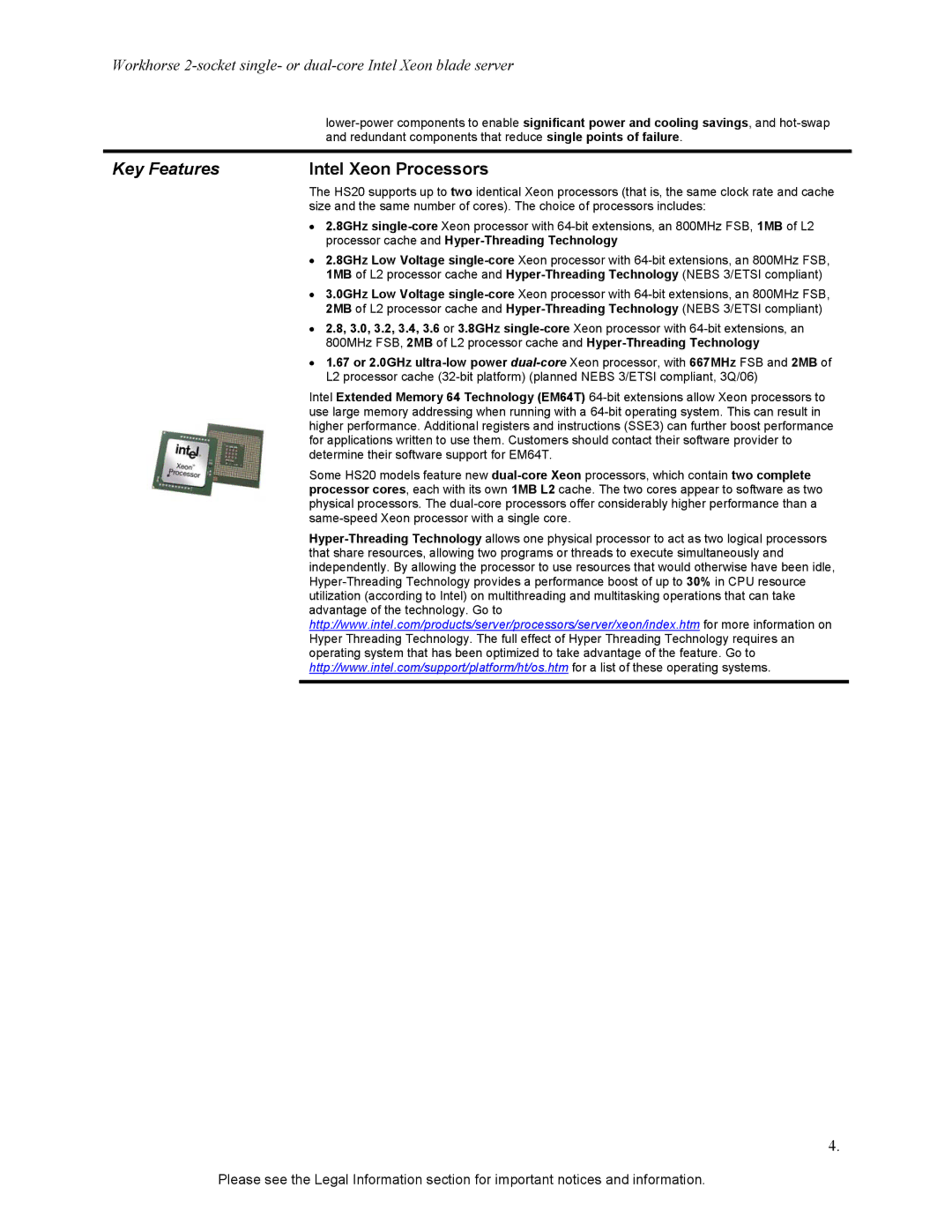Workhorse 2-socket single- or dual-core Intel Xeon blade server
lower-power components to enable significant power and cooling savings, and hot-swap and redundant components that reduce single points of failure.
Key Features | Intel Xeon Processors |
The HS20 supports up to two identical Xeon processors (that is, the same clock rate and cache size and the same number of cores). The choice of processors includes:
•2.8GHz single-coreXeon processor with 64-bit extensions, an 800MHz FSB, 1MB of L2 processor cache and Hyper-Threading Technology
•2.8GHz Low Voltage single-coreXeon processor with 64-bit extensions, an 800MHz FSB, 1MB of L2 processor cache and Hyper-Threading Technology (NEBS 3/ETSI compliant)
•3.0GHz Low Voltage single-coreXeon processor with 64-bit extensions, an 800MHz FSB, 2MB of L2 processor cache and Hyper-Threading Technology (NEBS 3/ETSI compliant)
•2.8, 3.0, 3.2, 3.4, 3.6 or 3.8GHz single-core Xeon processor with 64-bit extensions, an 800MHz FSB, 2MB of L2 processor cache and Hyper-Threading Technology
•1.67 or 2.0GHz ultra-low power dual-coreXeon processor, with 667MHz FSB and 2MB of L2 processor cache (32-bit platform) (planned NEBS 3/ETSI compliant, 3Q/06)
Intel Extended Memory 64 Technology (EM64T) 64-bit extensions allow Xeon processors to use large memory addressing when running with a 64-bit operating system. This can result in higher performance. Additional registers and instructions (SSE3) can further boost performance for applications written to use them. Customers should contact their software provider to determine their software support for EM64T.
Some HS20 models feature new dual-core Xeon processors, which contain two complete processor cores, each with its own 1MB L2 cache. The two cores appear to software as two physical processors. The dual-core processors offer considerably higher performance than a same-speed Xeon processor with a single core.
Hyper-Threading Technology allows one physical processor to act as two logical processors that share resources, allowing two programs or threads to execute simultaneously and independently. By allowing the processor to use resources that would otherwise have been idle, Hyper-Threading Technology provides a performance boost of up to 30% in CPU resource utilization (according to Intel) on multithreading and multitasking operations that can take advantage of the technology. Go to http://www.intel.com/products/server/processors/server/xeon/index.htm for more information on Hyper Threading Technology. The full effect of Hyper Threading Technology requires an operating system that has been optimized to take advantage of the feature. Go to http://www.intel.com/support/platform/ht/os.htm for a list of these operating systems.
4.

